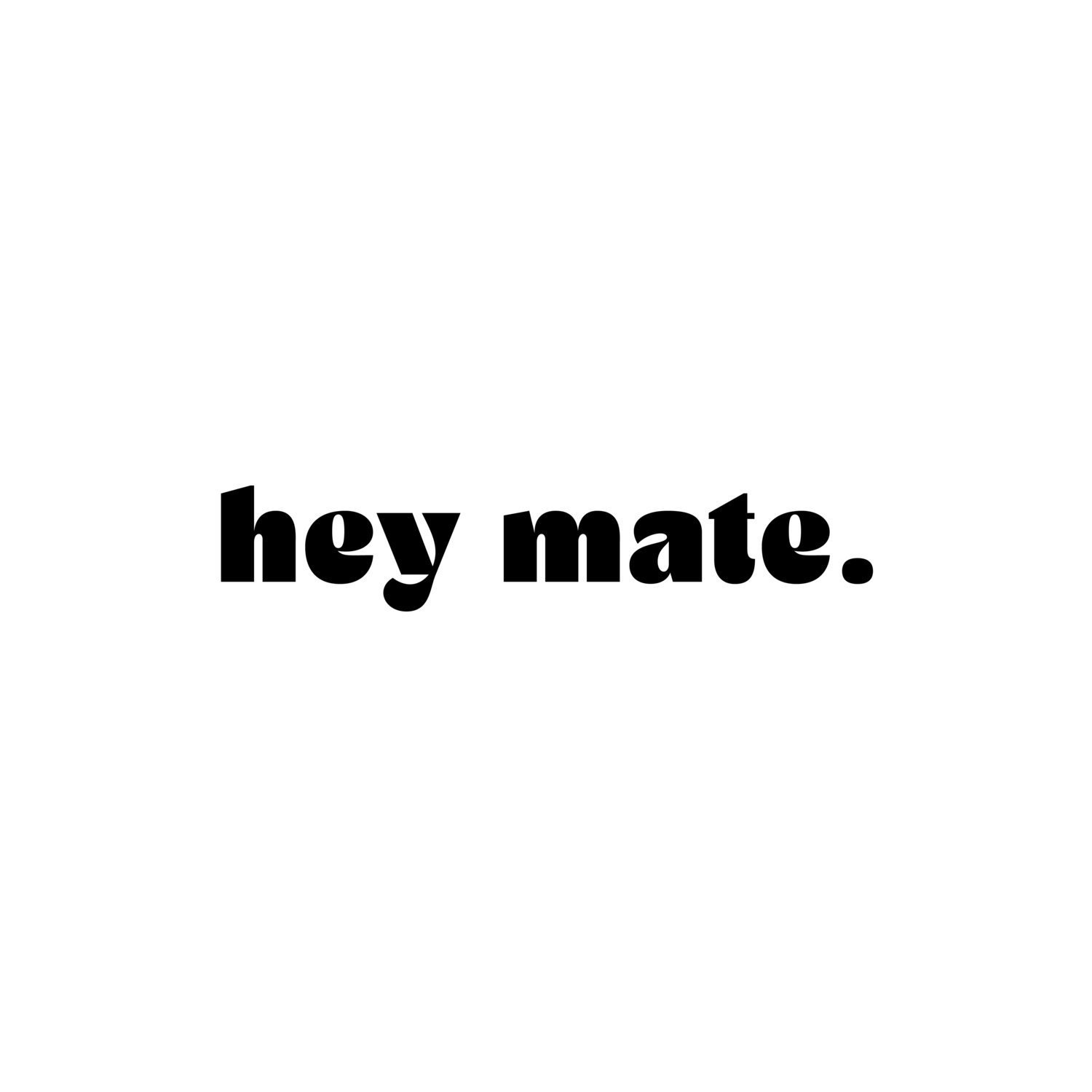Out of Office, Out of Mind? Why Creative Workers Struggle to Switch Off
You’ve wrapped the shoot, finished the bump-out, or closed the exhibition—but instead of celebrating or sleeping, you’re checking emails backstage, rewriting your bio in your head, and drafting a grant application on your notes app. Sound familiar?
For many people in the creative industries, switching off feels harder than finishing the work itself. Even when we try to rest, our brains are still running in the background—plotting the next pitch, replaying feedback, or worrying about what we “should” be doing instead.
At Hey Mate, we see this all the time. Creatives aren’t just tired from doing too much—they’re tired from never being off. The out-of-office message is sent, but the mental tab stays open. So why is it so hard for creative workers to truly rest? And what can we do about it?
Creative Work Is Personal—and That Makes It Hard to Power Down
For most people, a job is something they do. But for creatives, it’s often wrapped up in who they are. Your art, ideas, practice, or output are personal. They’re based on identity, lived experience, vulnerability, and values. When the stakes are that high, it’s no wonder switching off feels risky. It’s not just leaving the “office”—it’s stepping away from part of your identity.
When your creativity is also your income, your platform, and your sense of purpose, rest starts to feel like a threat to progress. There’s a constant pull to stay connected—to keep promoting, keep pitching, keep producing.
The Arts Normalise Hustle Culture (Even While Critiquing It)
Let’s be real: the creative sector glorifies exhaustion. Late nights, back-to-back gigs, and working through illness are often worn like badges of honour. We joke about “collapsing after the season ends” as if that’s just part of the job. We celebrate “doing what we love” while quietly breaking under the weight of it.
Even in progressive and values-driven spaces, there’s often an unspoken culture of always being “on.” That includes emotional availability, performance, and constant output—especially for freelancers or gig workers who feel the pressure to stay visible and responsive.
We might call out capitalist hustle culture, but we still internalise it. The result? A workforce that feels unable to rest even when it desperately needs to.
Boundaries Are Blurry When Work and Life Intersect
Many creatives work from home, tour interstate, or take gigs that blend professional and personal relationships. The lines between “work mode” and “rest mode” can become nearly invisible. You might be debriefing a show with a friend over drinks, troubleshooting tech from the beach, or promoting a project while you’re technically “off.”
This lifestyle makes traditional rest strategies—like weekends or structured annual leave—feel almost impossible. And even when the schedule clears, the nervous system often doesn’t. You’ve been in overdrive for so long that stopping feels like falling.
Switching Off Can Feel Dangerous When Work Is Insecure
Financial precarity also plays a major role. Many creatives live gig to gig, application to application. Taking a break can feel like falling behind, missing out, or risking the next opportunity. Even if you want to switch off, there’s often a voice saying: If I don’t reply now, someone else will get the job.
This fear isn’t imagined—it’s systemic. With short-term funding cycles, underpaid gigs, and casual contracts, rest can feel like a luxury few can afford. And when you’re already stretched thin, burnout starts to look like the only way your body will force you to stop.
So What Can We Do?
At Hey Mate, we know the solution isn’t telling people to “just switch off.” That advice doesn’t work when your nervous system is fried and your career is on the line. Instead, we focus on realistic, human-first strategies to make rest feel safer, more possible, and more sustainable.
Here are a few things that help:
Start small. Switching off doesn’t mean vanishing from the industry. It might look like turning off email notifications after 7PM, scheduling one weekend day without work talk, or deleting your socials from your phone post-show. The goal isn’t perfection—it’s interruption.
Plan your rest like you plan your deadlines. Add it to the calendar. Protect it. Name it as essential, not optional. “Rest week” or “off-grid day” should hold the same weight as “opening night” or “grant due.”
Create out-of-office templates that reflect your boundaries. You don’t owe people constant access. Let your auto-reply do the heavy lifting: “I’m currently offline recharging after a big project. I’ll be back on [date] and look forward to connecting then.”
Find your rest crew. Talk to other creatives who are also trying to build healthier patterns. Share your guilt. Swap tips. Hold each other accountable—not for doing more, but for doing less.
Work with your body, not just your calendar. Recovery is not just about time—it’s about nervous system repair. Walks, movement, screen breaks, naps, and nourishing food are not side activities—they’re core parts of creative longevity.
Rest Is Resistance. It’s Also Smart Strategy.
The most powerful thing a creative worker can do in a world that values constant output? Rest without apology.
It’s not just about self-care. It’s about staying in the game long enough to make the work you want to make. Burnout doesn’t serve your art, your audience, or your community. Rest does.
So the next time you’re tempted to check your inbox from the dressing room, or say yes to one more project when you’re already maxed out—pause. Breathe. Ask yourself: What would it take for me to switch off, just a little, today?
Because being out of office shouldn’t mean being out of mind. It should mean being in your body, in your life, and in a rhythm that actually sustains you.
Need support learning how to rest, set boundaries, or recover from burnout?
Hey Mate offers mental health support designed for creatives—by people who get it. Book a session, explore our resources, or join one of our workshops.


